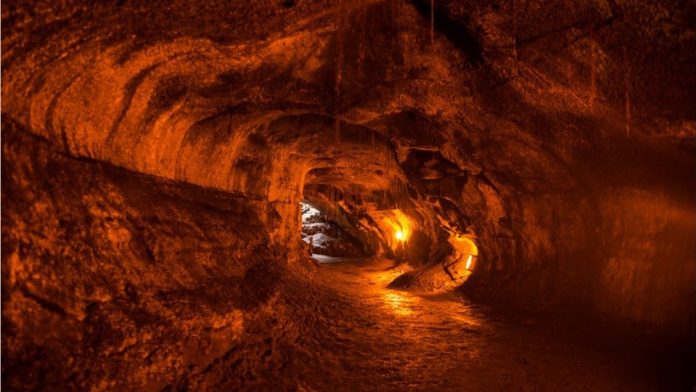An elderly man died after falling into a lava tube in his yard in Hilo, Hawaii, police announced on Wednesday, Nov. 6.
The man, named by Big Island Now as Robert Hisashi Nishimoto, 71, appeared to be trimming branches in his yard when he fell “through a soft area of ground” into a hidden lava tube and died, police said on Wednesday.
Police arrived at Nishimoto’s home to perform a welfare check on Monday after one of his friends called to report him missing, Big Island Now reported. Rescue personnel found him at the bottom of the 60-centimetre-wide lava tube, 6.5 metres below ground.
He was take to hospital, where he was pronounced dead. An autopsy found he died “as a result of injuries consistent with falling” and police said no foul play was suspected.
It’s unclear how he fell into the lava tube. Ken Hon, a vulcanologist at the University of Hawaii at Hilo, told The Washington Post he suspects the hole was already there and that the man most likely just didn’t see it – possibly because it was covered in overgrowth. Plenty on the island are, Hon said. The tubes are everywhere: in neighbourhoods and under streets, in forests and national parks like an underground cave system right beneath your feet.
“You could be standing on one and not even know it,” Hon said.
The holes are called “skylights”, he said. “That’s where a thin part of the roof collapses, so you’ll have a hole into the lava tube. If you think of a skylight in a house, it’s just a window up in the roof. The skylight is a hole in the roof of the cave.”
Hon and two other scientists told the Post believe there’s a good possibility the lava tube formed during the massive 1880-1881 eruption of the Mauna Loa volcano. The lava flowed for months and kilometres, threatening the town of Hilo as it inched closer. People prayed to God and Pele, the Hawaiian goddess of volcanoes, asking for the lava to stop, building ditches and blasting dynamite to try to divert its flow, the National Park Service said.
More than nine months later, once the rivers of lava stopped, the result was the Kaumana Caves – an eight-kilometre network of lava tubes.
Tom Shea, a vulcanology professor at the University of Hawaii at Manoa, said tube systems are typically structured “in a treelike fashion”.
The primary tube is the trunk, sometimes stretching nine metres or more in diameter, while secondary tubes are like branches, growing smaller with distance, he said.
“The difficulty is, therefore, that even if the main tube location is known, there are still hazards associated with secondary tube branches,” he said.
The victim most likely fell into “the prolongation of the well known Kaumana Caves on the west side of Hilo,” Shea said.








